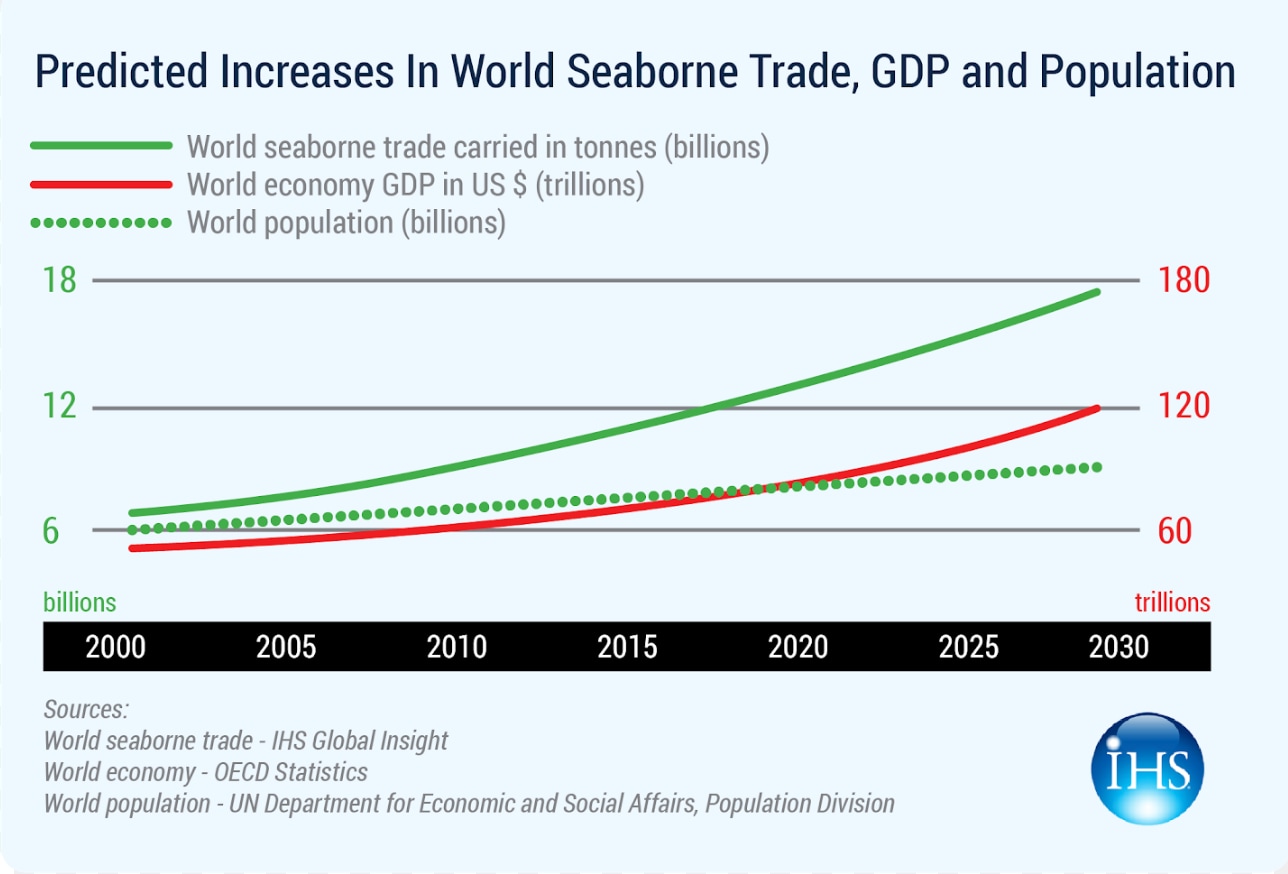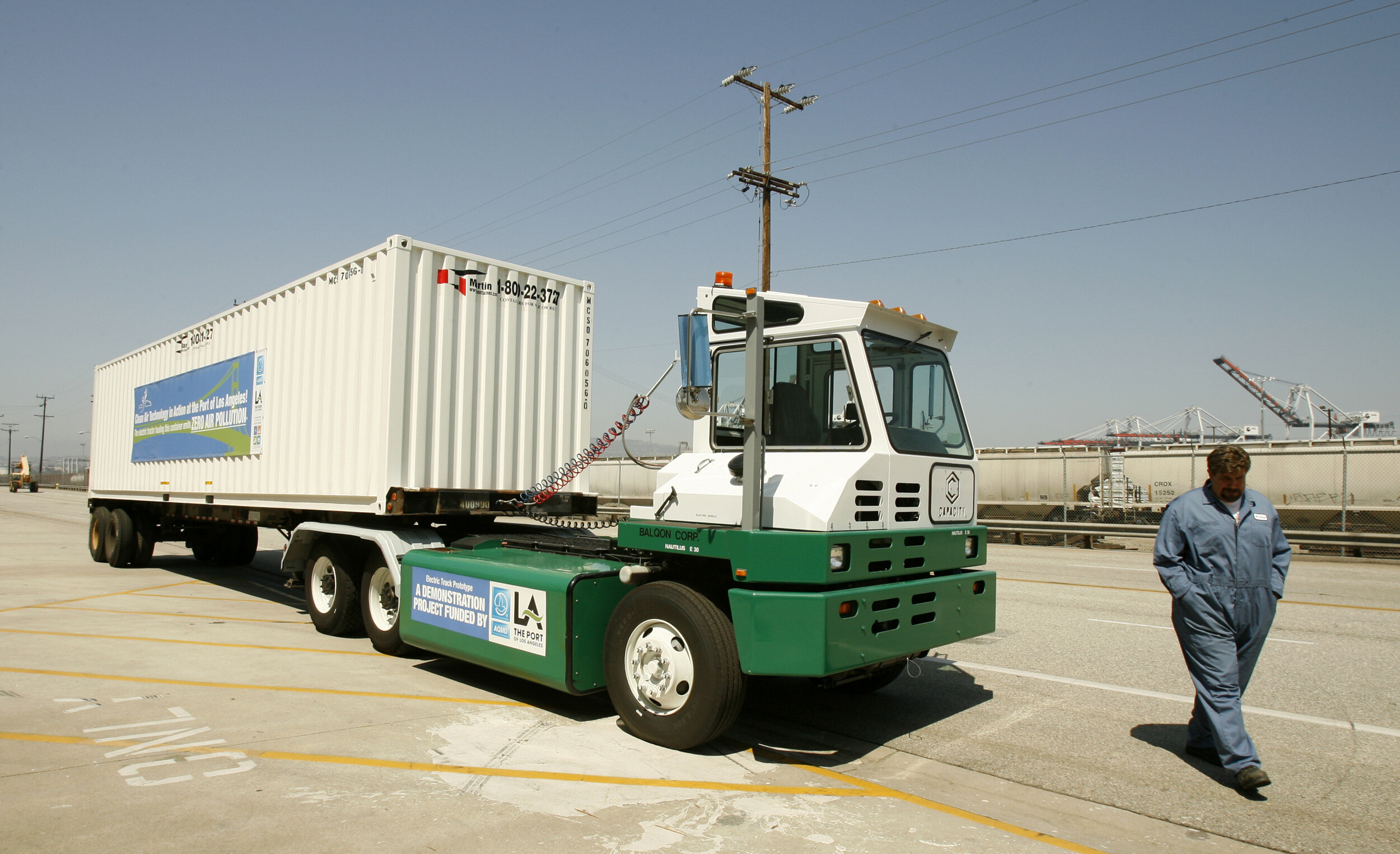How to decarbonize shipping without spending billions

Digital technology can drive enormous efficiencies across the maritime freight sector Image: REUTERS/Michael Kooren
Wajiha Khalid
Global Shaper, Rawalpindi Hub & Programme Director Operations and Marketing, Cubex Global- The maritime shipping industry must make some big changes if it is to meet its target of a 50% reduction in emissions by 2050.
- Zero-emission ships are one avenue - but they require huge investment.
- By increasing efficiency in the sector with digital technology, emission reductions can be achieved at a much lower cost.
Have you recently purchased a limited edition luxury sedan that is only available from selected dealers in Germany? Did it seem very convenient to have the car delivered to your nearest dealer in a month’s time from overseas? If the answer is yes, you may want to take a step back and look at the factors that made this magic possible.
What seems like a simple car purchase order involves a complex chain of warehousing, shipping agents, ocean carriers and customs clearance in order to make the entire process run smoothly and ensure your car arrives on your doorstep in a few days’ time.
The maritime shipping industry is only responsible for around 2-3% of global greenhouse gas emissions. However, in order to achieve the International Maritime Organization's (IMO) ultimate goal of a 50% reduction in CO2 emissions from shipping by 2050, the industry requires some drastic innovation.
This can be expensive. The Getting to Zero Coalition - a global alliance of 90 companies from the maritime, energy, infrastructure and finance sectors - aims to have commercially viable, deep sea, zero-emission vessels in operation by 2030, but that will demand huge capital investments worth billions of dollars if this is to be achieved within the next decade.
As stakeholders come under increasing pressure to reduce emissions, then, the most pressing need today is to start looking into cheaper and faster solutions which do not require billions of dollars’ worth of capital injection to begin moving towards this goal.
Digitalizing the high seas
One possibility could be to revisit how global supply and demand operations are currently handled across the shipping industry. Container slot reservations in shipping are largely dominated by players such as shippers, freight forwarders and non-vessel-owning common carriers (NVOCC). If you closely look at the process of buying and selling available shipping container space, you will see that this multi- billion dollar industry is still dependent on analogue methods for handling space reservation and releasing operations from single and multiple parties.
The absence of a reliable, robust and efficient digital marketplace solution has translated itself into a multi-billion dollar opportunity. A shipping container can be in three states: full container load (FCL), in which a single shipment occupies an entire container; less than container load (LCL), in which multiple shippers' goods are packed together; or they can be empty. The LCL container state allows multiple parties to reserve available space, which is generally measured in cubic metres. Analysis based on market research by Cubex Global and industry data suggests that globally 25%-40% of LCL capacity goes empty. Once we apply this percentage on global LCL traffic of 36 million 20-foot equivalent units (TEU), where one unit is equivalent to a standard 20-foot container, we can see the need for and utility of a solution which would not only recover many billions of dollars in lost revenues, but which could also offset carbon emissions by 6% just by becoming 25% more operationally efficient.
If a container falls under the category of empty - which accounts for around 10% of global outbound container traffic - then we see a drastic improvement in carbon emissions offsetting to 12.2%, which translates to 122 million fewer tons of CO2 emitted each year.

Start-ups with the wind in their sails
Owing to fragmented business processes with multiple stakeholders, shipping industry players are now looking more than ever to start operating in a collaborative environment as opposed to a competitive one.
This is the context in which a handful of start-ups around the world are poised to take advantage. Cubex Global - co-founded by the authors - has developed a digital marketplace built upon collaborative blockchain principles, which enables the buying and selling of cubic metres of container space just like any other valuable commodity. The platform promises gains in operational efficiency of anywhere between 25%-40% in LCL and 100% in FCL and empties.
Another prominent start-up that is operating on collaborative blockchain principles is ShipChain, which handles end-to-end logistics across global supply chains. The level of accountability and security required in global supply chain operations is voluminous, and there are only a handful of industry-first solutions such as ShipChain and Cubex Global that are beginning to address this problem.
How UpLink is helping to find innovations to solve challenges like this
More now than ever, the shipping industry needs to form alliances with global supply chain players to move towards a shared goal of a transparent, secure and accountable industry. This paradigm will allow stakeholders - most importantly, buyers and sellers - to participate in equitable trade while competing for fair pricing in the reservation of cubic meters of shipping space. As a result of the establishment of such an ecosystem in the shipping industry, environmental sustainability and impact will become inevitable in saving the planet from harmful carbon emissions and other greenhouse gases, thus accelerating the pace of achieving UN’s Sustainable Development Goals at the same time.
Above all, implementation of such solutions do not even require multi-billion dollar investment to start achieving these goals, as efficient industry solutions only require a few thousand dollars to start moving towards a greener and transparent eco system.
Don't miss any update on this topic
Create a free account and access your personalized content collection with our latest publications and analyses.
License and Republishing
World Economic Forum articles may be republished in accordance with the Creative Commons Attribution-NonCommercial-NoDerivatives 4.0 International Public License, and in accordance with our Terms of Use.
The views expressed in this article are those of the author alone and not the World Economic Forum.
Stay up to date:
UpLink
Related topics:
Forum Stories newsletter
Bringing you weekly curated insights and analysis on the global issues that matter.
More on Supply Chains and TransportationSee all
Wee Kean Fong and Yvonne Zhou
November 19, 2025







